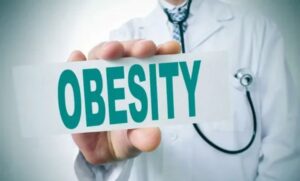You may have heard about folic acid in your life once, but you might not know about this vitamin’s miracles. This B vitamin is essential for producing healthy red blood cells and for unborn babies to develop properly, without serious birth defects. It is vital for females of childbearing age, adolescent girls, and fetuses. Unfortunately, many people still don’t get enough from food and supplements.
In this article, we’ll get to the bottom of what folic acid is and how it works, why it’s so important for reproductive health, and how you can make sure you’re getting enough, whether you’re trying to conceive or just looking to stay healthy. For comprehensive guidance on balanced nutrition and personalized support, visit Beargoal.
What is Folic Acid?
Folic acid is the synthetic form of folate, a type of B vitamin. And while folate is naturally present in leafy green vegetables, fruit, beans, and some animal products, folic acid is the synthetic form added to supplements and fortified foods like breakfast cereals, breads, and pastas.
In the body, folic acid assists in the creation and repair of DNA, encourages the production of red blood cells, and is important in the division of cells. They play a critical role in everyday well-being and are particularly important during times of rapid growth, such as pregnancy, adolescence, infancy, and with ageing.
Why is Folic Acid Important?
One of the most important uses for folic acid is for the prevention of NTDs (Neural Tube Defects), which are serious birth defects of the brain and spine. Such defects develop in the first month of pregnancy, typically before a woman even knows she is pregnant. Folic acid contributes to the formation of the neural tube, which becomes the baby’s brain and spine.
Studies show that taking folic acid daily before conception and during early pregnancy can help prevent NTDs, such as spina bifida and anencephaly, by up to 70%. This is why public health experts, such as those at the C.D.C. and W.H.O., suggest that all women of childbearing age take folic acid, even if they are not planning to get pregnant immediately.
Along with shielding unborn babies, folic acid maintains cardiovascular health by reducing homocysteine, an amino acid that can harm arteries when it’s increased. It can also protect against some kinds of anemia, which result from folate deficiency and can cause symptoms such as fatigue, weakness, and lack of concentration.
Folic Acid and Women’s Health
Folic acid is more than just another prenatal supplement for women. It balances hormones, fosters fertility, and promotes healthier menstrual cycles. Women require higher levels of folic acid to maintain a developing placenta and fetus. Low levels can cause problems such as low birth weight, premature delivery, and even miscarriage.
Folic acid is also important in ancient times, even after pregnancy, when women are breastfeeding. It lends support to milk production and assists mothers in recovering postpartum. The nutrient even factors into mental well-being, with some evidence that low folate levels are associated with depression and other mood disturbances. Some research has indicated that folic acid supplements may boost the effectiveness of antidepressants, particularly in women.
Teenage girls also need enough folic acid, as their bodies are often still growing and developing. Their bodies turn to it to grow cells, balance hormones, and build brains. Regrettably, many adolescent girls don’t consume adequate amounts of food alone, so supplementation is a useful choice.
Folic Acid and Fetal Development
Folic acid is crucial from early pregnancy to a baby’s development. “Twenty-eight days after conception, the neural tube in an embryo closes. Without adequate folic acid, the tube may fail to close completely, resulting in devastating conditions such as spina bifida (failure to close part of the spinal column) or anencephaly (failure to develop part of the brain). These diseases are frequently fatal or result in lifelong disability.
Outside of the neural tube, folic acid also contributes to the development of the baby’s heart and circulatory system, brain, and body. In the fetus, it helps create red blood cells, which are vital for growth. As pregnancy advances, folic acid also continues to assist with tissue and organ formation, which makes it vital throughout each of the three trimesters.
Because of its importance, many governments, such as the United States, Canada, and many European countries, mandate that certain grain products be fortified with folic acid. This public health measure has dramatically decreased the incidence of birth defects globally.
How Much Folic Acid Do You Need?
Health experts say adults, including women of childbearing age, should get at least 400 micrograms (mcg) of folic acid each day. Pregnancy increases this need to 600- 800 mcg. For women who have had a prior pregnancy affected by a neural tube defect, doctors typically recommend a higher dose, sometimes as much as 4,000 mcg a day under medical supervision.
Teenage girls, even if they’re not planning a pregnancy, should also target 400 mcg daily to help support their growth and hormonal development. As approximately 50 percent of pregnancies are unintended, taking folic acid regularly also helps to ensure the body is ready as soon as possible.
| Group | Recommended Daily Intake |
| Adults | 400 mcg |
| Teen girls (14–18) | 400 mcg |
| Women of childbearing age | 400–800 mcg |
| Pregnant women | 600–800 mcg |
| Breastfeeding women | 500 mcg |
Where to Get Folic Acid from?
Folic acid is found in many supplements and fortified foods. Nearly all prenatal vitamins contain the RDA (Recommended Dietary Allowance). Folic acid is also available in multivitamins or as a single supplement.
Folic acid is added to many foods that are commonly eaten. These are primarily fortified breakfast cereals, pasta, rice, and bread made with flour that is enriched. In 1998, the U.S. Food and Drug Administration (FDA) began mandatory folic acid fortification of grain products, which has been followed by a substantial decrease in the rate of birth defects.
Folate can also be found in a range of whole foods. Leafy greens such as spinach, kale, and romaine lettuce are excellent sources. Other sources include avocados, oranges, beans, lentils, and asparagus. The body does metabolize synthetic folic acid better than natural folate, but both types are preferable. Some of the natural sources are: For personalized advice on incorporating folate-rich foods into your diet and optimizing your nutrition, schedule a free consultation with our expert nutritionists.
| Food | Folate Content (approx.) |
| Spinach (1 cup, cooked) | 260 mcg |
| Lentils (1/2 cup, cooked) | 180 mcg |
| Asparagus (4 spears) | 85 mcg |
| Avocado (1 medium) | 90 mcg |
| Oranges (1 medium) | 40 mcg |
Can You Get Too Much Folic Acid?
While folic acid is beneficial, too much of it, especially from supplements, can be problematic. The safe upper limit for adults is 1,000 mcg per day of folic acid from fortified foods and/or dietary supplements. Consuming more than this can prevent a vitamin B12 deficiency from becoming obvious, particularly if you are an older adult. Another important nutrient is vitamin B12 deficiency in which, if left untreated, can cause significant nerve damage as years progress.
So, unless you have been advised by a doctor to take a high dose of folic acid, you should be fine sticking to the recommended daily amount.
Folic Acid Deficiency: Signs and Risks
Folic acid deficiency may cause anemia, in which the body has low levels of healthy red blood cells. This can lead to symptoms like tiredness, pale skin, irritability, poor appetite, and a swollen tongue. In extreme cases, it may affect the GI tract and cognitive function.
Higher-risk populations for folic acid deficiency include individuals with junk food diets, alcoholism, and gastrointestinal problems, including celiac or Crohn’s disease, as well as those who are taking medications that interfere with folate metabolism (like methotrexate and certain anti-seizure drugs). Such individuals could be offered folic acid supplementation based on advice from the medical practitioner.
Conclusion
Folic acid is a key nutrient that helps support life from its earliest beginnings. It’s what protects babies from devastating birth defects, helps women stay on a healthy path, helps teens grow up healthy and strong, and continues to provide health benefits throughout a person’s life! Despite its importance, many individuals continue to fall short of the recommended intake.
Folic acid gives the most benefit when taken before pregnancy, so any woman of childbearing age must incorporate it into her routine. Whether in a healthy diet, fortified foods, or supplements, ensuring we are getting enough folic acid is an easy step that has the potential to make a lifetime of difference for mothers, babies, and future generations. To support your health journey, use our BMI Calculator, assess goals with the Ideal Body Weight Calculator, and monitor hydration with the Water Intake Calculator.






